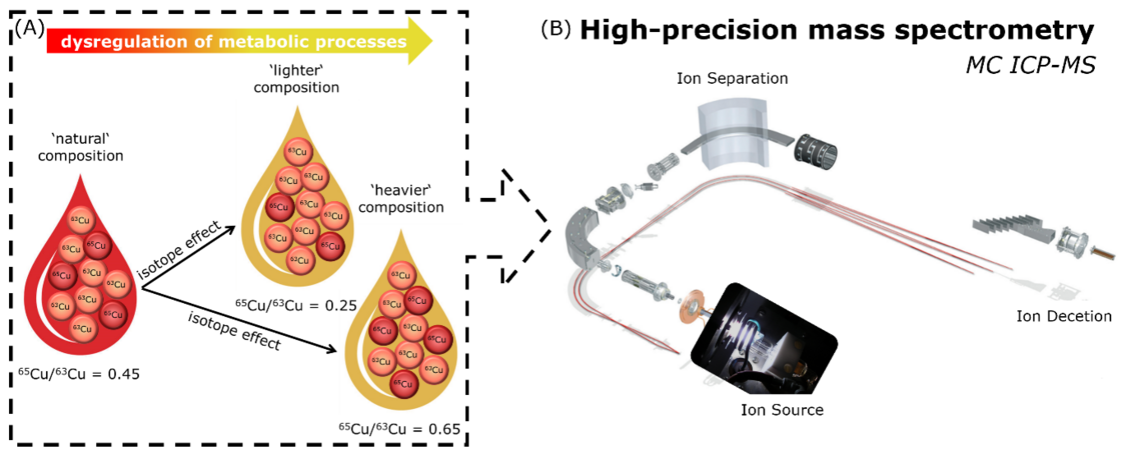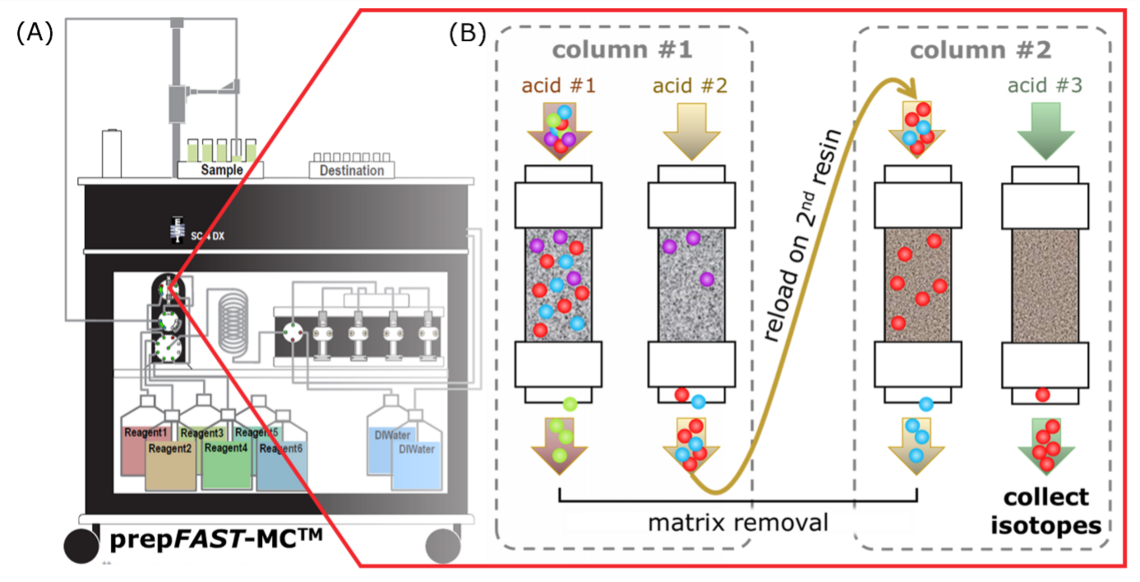Isotope Metallomics as an Emerging and Powerful Diagnostic Tool
Development of reliable and precise high-throughput isotopic analysis for copper and zinc
The Need for Automated Analyte Purification
Diseases can lead to subtle changes in the stable isotopic composition of essential elements such as calcium, iron, copper and zinc in living systems. For example, in case of Wilson’s disease, the stable Cu isotopic composition of serum is lighter than for then reference population. Even though the relative variations in stable isotopic composition are subtle, they are significant, robust and measurable, when using appropriate high-precision mass spectrometry methods (e.g., MC ICP-MS) and calibration strategies. The analysis of these isotopic changes in biofluids and tissues such as blood, urine, hair or toenails is a new promising diagnostic/prognostic tool that enables one to characterize an individual’s health. The great potential of the stable isotope method lays in the detection of various diseases at an earlier stage and with less invasive measures than conventional methods. However, in order to apply this stable isotope method for elements such as calcium, iron, copper and zinc in the clinical setting, reliable and precise high-throughput isotopic analysis procedures must first be developed – that do not exist yet. Current procedures for high-precision isotopic analysis are time-consuming, labour-intensive and have high instrument running costs. Analyte purification is the main bottleneck for high-throughput isotopic analysis with its low sample throughput. Automation is key here – and this is exactly where the approach of this project comes in.
Successfully overcoming this challenge will lead to greater clinical acceptance of the isotopic method for calcium, iron, copper and zinc, and, subsequently, improved diagnosis and treatment of diseases such as osteoporosis, Wilson’s disease and Alzheimer’s disease. Their early and reliable diagnosis is still a major challenge due the lack of specific and reliable biomarkers. Untreated Wilson’s disease is lethal but when reliable diagnosed, it can be treated and kept under control. In case of early diagnosed Alzheimer’s disease, effective therapeutics can slow it down and further, patient can be monitored for linked diseases such as osteoporosis.

Panel A. Simplified illustration of the isotope effect as result of a dysregulation of a metabolic process using the example of Cu isotopes in blood. The resolution of the variation in stable Cu isotopic composition requires high-precision mass spectrometry. Panel B. Schematic diagram of a multicollector inductively couple plasma mass spectrometer (MC ICP-MS). Reference MC ICP-MS illustration: Thermo Fisher Scientific.
Our Work
In recent years, commercial automated chromatographic systems for analyte purification have been developed – such as the prepFAST-MCTM (Elemental Scientific) – that are fast and overall very efficient by unattended operation, more reproducible flow rates and elution volumes, and lower procedural blanks. To date, automated analyte purification has been of limited use for mainstream biomedical applications because of low matrix tolerance or because automation is interrupted by evaporation and resin exchange steps in previously developed procedures. Consequently, in this project we will utilize the prepFAST-MCTM and develop automated two-stage separations procedures – as required for the isotopic analysis of essential mineral elements (e.g., iron, copper, zinc).

Panel A. Schematic of the prepFAST-MCTM system by Elemental Scientific. Panel B. Simplified illustration of a two-stage separation procedure – as it is intended to be implemented at the prepFAST-MCTM system. Reference prepFAST-MCTM illustration: Elemental Scientific.
Funding
This project is funded by the Leopoldina Postdoc Scholarship (LPDS 2022-14).
